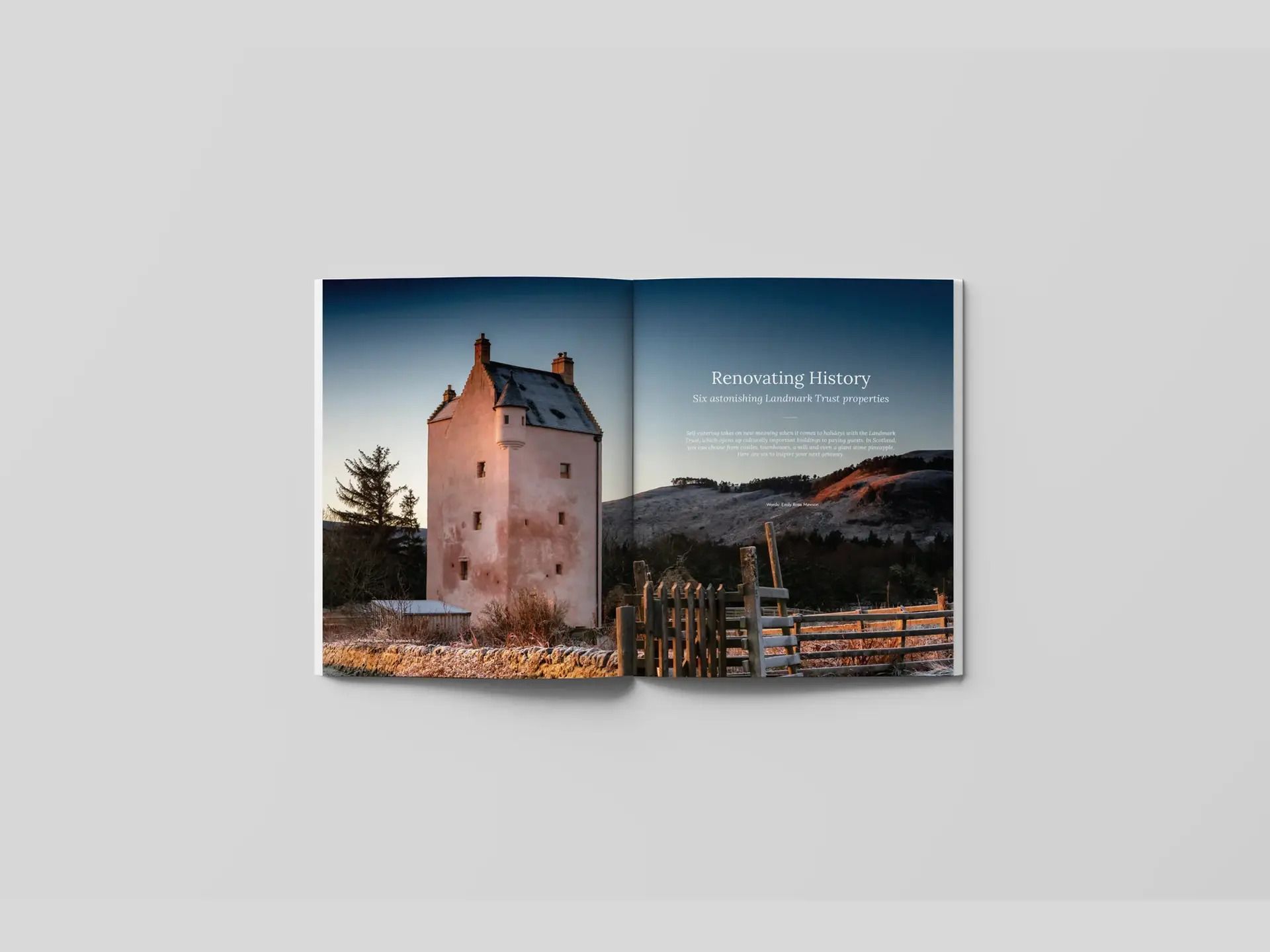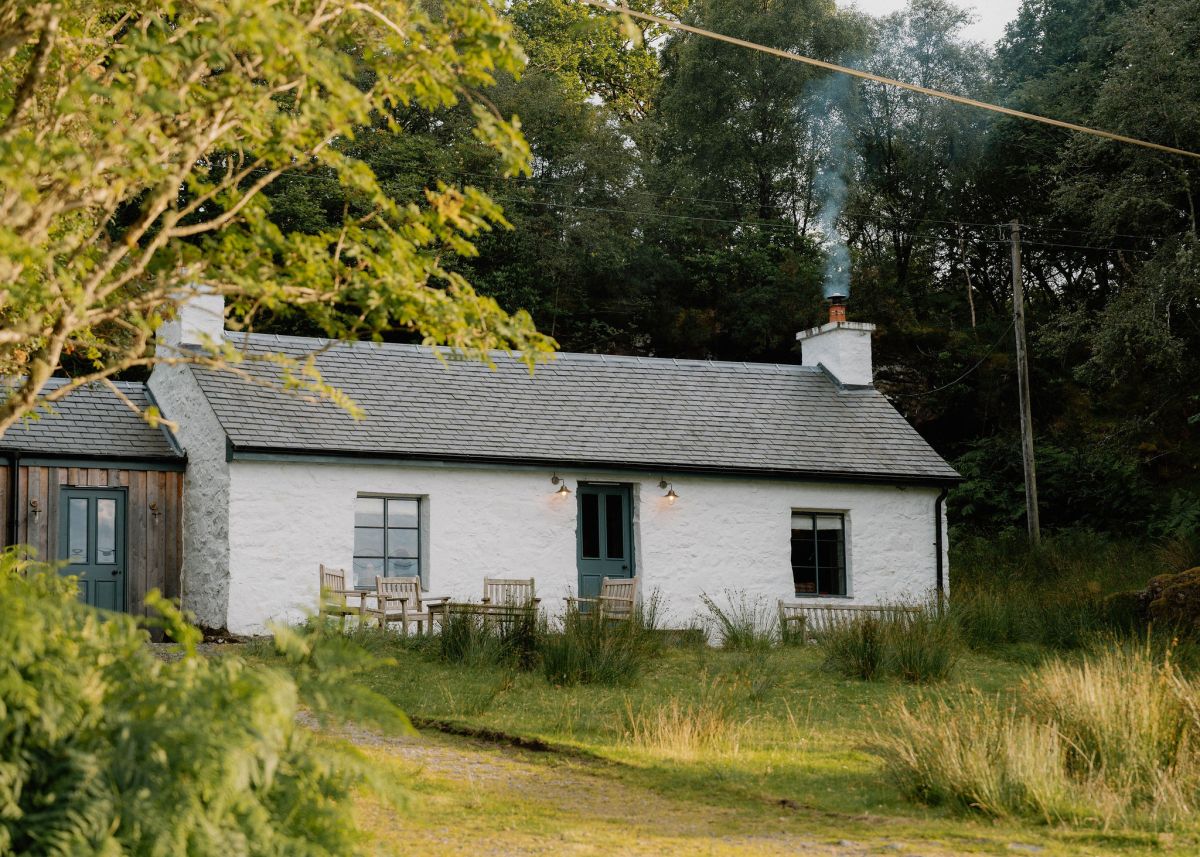- The Hidden Scotland Weekly
- Posts
- 26th October 2025
26th October 2025
Hello and welcome to the Hidden Scotland Weekly

Sunday 26th October 2025
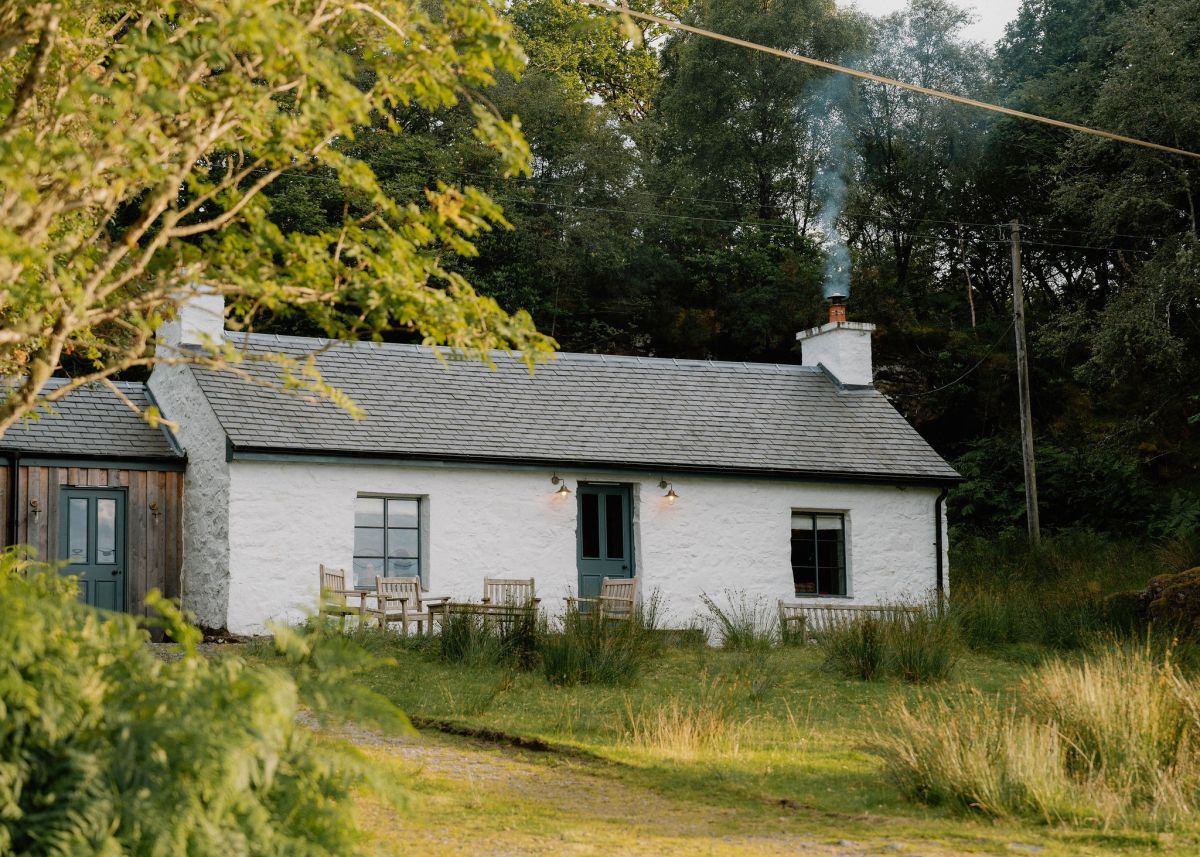
Fern Cottage on Mull
Today's weekly takes approximately 12 minutes to read.
Hi 👋
This week’s Hidden Scotland Weekly moves between coast and countryside, from restored heritage buildings to the quiet corners where stories still grow. We explore six remarkable Scottish properties cared for by the Landmark Trust, where history can be lived in for a weekend or more.
On Skye’s Waternish Peninsula, Lucy Montgomery shares how wildflowers, cake and conversation come together at Waternish Farm, while our journey south takes us to the book-lined streets of Wigtown, Scotland’s National Book Town.
There’s a look inside Fern Cottage on the Isle of Mull, our 2026 calendar is now available, and of course, the weekly quiz returns — with the answers waiting at the end.
What’s in this week’s email.
This Week’s Quiz
Renovating History - Six astonishing Landmark Trust properties
Waternish Farm – Conservation, Cake and Corncrakes on Skye’s Quiet Side
Did you know…
Fern Cottage
A Walk Through Scotland’s National Book Town - Wigtown
Our 2026 Calendar
Quiz Answers

1.What building material is Irn Bru said to be made from in its adverts?
2.How many hills is Edinburgh said to be built on?
3.Which Edinburgh author wrote Sherlock Holmes
We are delighted to be back with our wall calendar for 2026. Enjoy a selection of stunning photography that captures some of Scotland's best bits throughout the year.
The A3 landscape wall calendar is printed on a beautiful matt art paper stock that makes the images really stand out. The landscape layout allows for an A4 image on one side, which can be utilised as a print afterwards.
As well as a square for each day for you to add those all important events and special dates you have coming up in the new year. There is also a notes section for any additional information you need to jot down for that month.
What’s in issue 11 Spotlight - Renovating History - Six astonishing Landmark Trust properties
Self-catering takes on new meaning when it comes to holidays with the Landmark Trust, which opens up culturally important buildings to paying guests. In Scotland, you can choose from castles, townhouses, a mill and even a giant stone pineapple. Here are six to inspire your next getaway.

Waternish Farm – Conservation, Cake and Corncrakes on Skye’s Quiet Side
Waternish Farm lies along a gentle stretch of Skye’s north-west coast, where clifftop meadows meet views across the Minch to North Uist. Since 2011, Lucy and Robert Montgomery have been restoring these fields with over 100 species of native wildflowers, supporting everything from pollinators to the elusive corncrake. What makes a visit here special isn’t just the scenery — it’s the chance to walk with Lucy, hear her stories of island life, and sit down afterwards for coffee, cake and an honest conversation about conservation. Visitors can also stay overnight in the Gate Lodge, browse Lucy’s books, or follow a quiet trail from Waternish Forest to Sgorr Bay. It’s an unhurried, grounded way to experience Skye — and a rare insight into farming that works in tune with its surroundings.
One of Lucy Montgomery’s favourite jobs at Waternish Farm on the northwestern Waternish Peninsula is leading small group walks across the abundant wildflower meadows that she and her husband Robert have been protecting since 2011. Tall grasses grow among orchids, clover, vetch and buttercup – a vital habitat for visiting corncrakes. The fields slope gently down to the coastal waters of Loch Bay, with views looking out across the Minch to North Uist and, says Lucy, “the air is fresh and salty, filled in summer with the scent of grass, gorse, and heather, and the hum of bees gathering pollen to take back to the hives near the farm”.
Following the walks, the groups meet in the farm’s tea room for coffee and cake, and an illustrated talk on conservation and the challenges of farming in such a remote environment. A herd of black lowline Angus graze the farm in summer, and autumn silage production coexists with preserving over 100 species of wildflowers.
“Skye has taught us to appreciate a slower pace of life,” says Lucy, who takes “enormous pleasure in showing visitors round the farm. “When you’re here,” she says, “spend time outdoors, even on rainy days.” Her favourite walk is Waternish Forest to Sgorr Bay, a route less trodden with views of steep cliffs, the Ascrib Islands and the port of Uig. When friends visit, she encourages them to visit the local attractions: YURTea&coffee, Divers Eye Boat Trips, Cuckoo Tree Art Studio, Skíō Pottery, Donnie’s Tablet Shed and Dandelion Designs, rounded off with a meal at the Stein Inn or Loch Bay Restaurant.
You can also book a stay in Waternish Farm’s Gate Lodge, a cosy retreat for hunkering down with a copy of Lucy’s latest book Ask Not Why, the second part of her Skye-based trilogy Ask Not How. The lodge sits just above the wildflower meadows, with views out to sea and the quiet of the peninsula all around. It’s a place to slow down — to read, walk, or watch the light shift over Loch Bay — and to get a closer sense of how life and work move gently forward in this part of Skye, shaped by patience, purpose and the land itself.
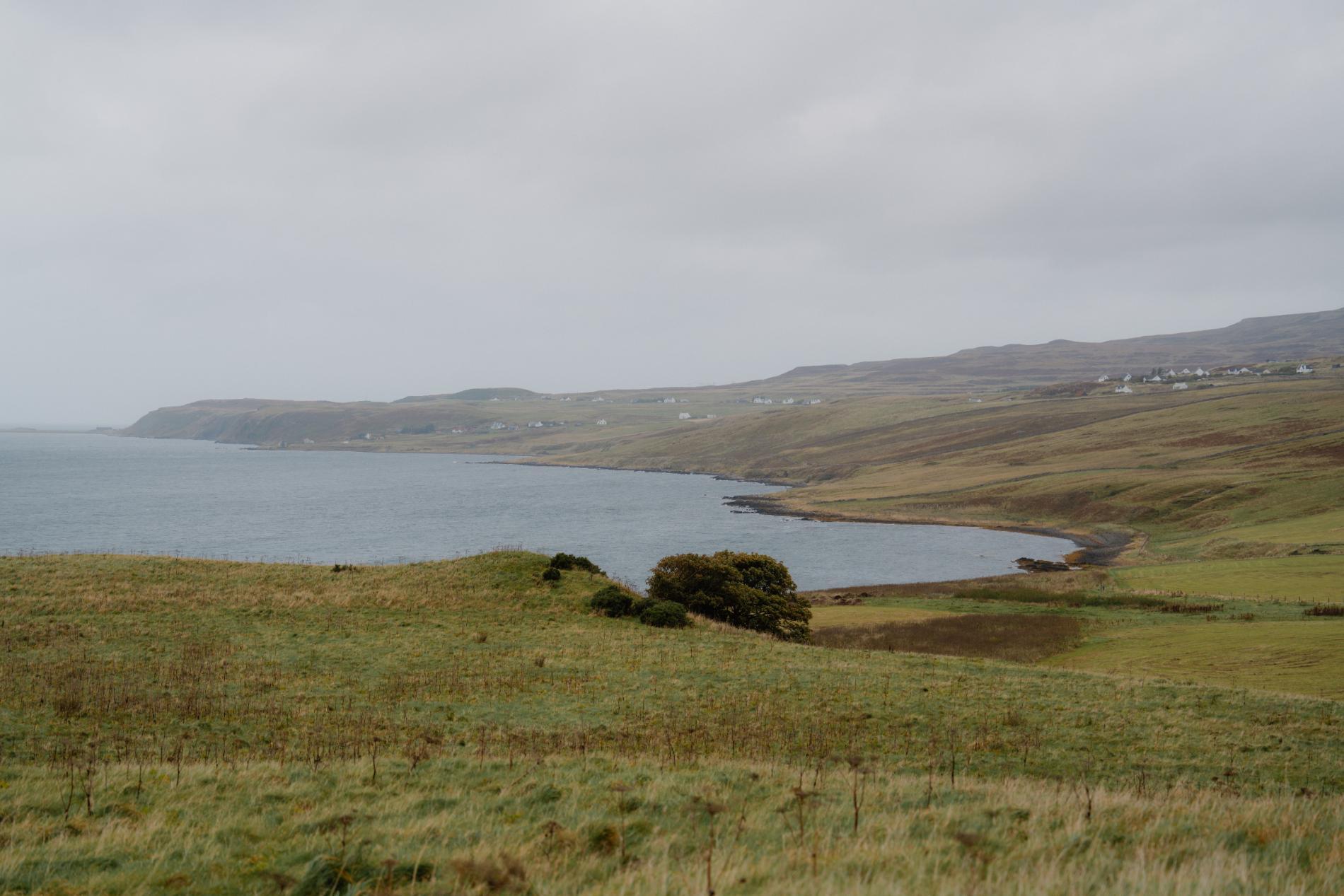


Fern Cottage
Hidden deep in the wilds of the Isle of Mull, Fern Cottage sits quietly on the shores of Loch Spelve, a secluded corner of the island few ever reach. Surrounded by moorland, ancient trees and open sky, this former crofter’s home has been lovingly restored into a stylish retreat that remains faithful to its roots. Inside, the design is cosy yet elegant, with painted wooden panelling, vintage furnishings and a wood-burning stove ready to thaw you after a windswept walk. Every detail invites relaxation, from the soft wool throws and antique lamps to the record player that spins old classics as you watch the weather roll in across the loch.
Step outside and the only sounds you’ll hear are the calls of curlews and the distant splash of oystercatchers in the shallows. Otters are frequent visitors to the shore. Red deer wander down from the hills at dusk. Look up and you might catch a glimpse of a sea eagle gliding overhead. Days here begin with coffee on the bench watching the mist lift from the water and end with a dram beside the fire as the stars begin to prickle the sky.
Fern Cottage is not connected to the bustle of the world. There is no WiFi and few passing cars. It is a place of silence, of slow rhythms and simple pleasures. Whether you’re drawn by the promise of wildlife, walking trails or deep rest, this remote cottage offers something quietly unforgettable.
A Walk Through Scotland’s National Book Town - Wigtown
A small market town with less than 1,000 residents, Scotland’s dedicated National Book Town is located along the coast of southwest Scotland in Dumfries and Galloway. Despite its small size, Wigtown is a true Scottish jewel and a treasure trove for visiting bibliophiles. Not only does the town boast more than a dozen book related businesses, but it also hosts a yearly literary festival for ten days each autumn. Book lovers may also recognise Wigtown from Shaun Blythell’s bestselling book, Diary of a Bookseller, which tells the tale of life running Scotland’s largest second hand bookshop. It’s a humorous and reflective read that gives readers a rare insight into this special corner of the country.
Wigtown has a rich history that begins way before it was named Scotland’s National Book Town in 1997. Having first been established more than 1,000 years ago, Wigtown has lived through rule by the Celts, Anglo Saxons and the Norse, after their invasion in the 9th century. Its unique name is believed to have stemmed from the phrases ‘wic’ and ‘ton’ meaning either ‘village’ and ‘hill’ or ‘bay’ and ‘town’. Despite its quirky name, Wigtown is infamously known for its dark past, which, in 1685, saw two women drowned for refusing to join the dominant religion of the time. Popularly known as the ‘Wigtown Martyrs’, Margaret Maclauchlan and Margaret Wilson’s resting places can still be found in the local churchyard and a monument lies on Windy Hill, which is just a short walk from the town centre.
Today, of course, Wigtown is famed for its celebration of literature and collection of independently owned bookshops. You won’t find a chain bookshop here! The vibrant Wigtown Festival is the highlight of its calendar year, having been set up in 1999 and running every year since. It typically attracts a number of high profile authors, and supports a variety of projects for new and upcoming writers, such as the Wigtownshire Young Writers Programme. The festival takes place each autumn, filling the town with readings, discussions and events that celebrate both established and emerging voices.
The best way to set about exploring Wigtown is with a stroll down Bank Street, which leads into North Main Street and runs from one end of the town to the other. At the top of the road you’ll find Beltie Books & Café, which is housed in a pretty stone building and adorned with a sign that’s reminiscent of a classic Penguin Books cover. This is the first of two bookshops in town that also run their own cafés, and further down the road you’ll spot ReadingLasses with its characteristic purple and blue exterior. Specialising in books written by and about women, ReadingLasses also stock directly from the wonderful Persephone Books - an exquisite publisher based in Bath that specialises in neglected works by 20th- century female writers. It’s a fab place to pop into for a piece of cake, a cup of tea and a read of one of their many feminist tomes.
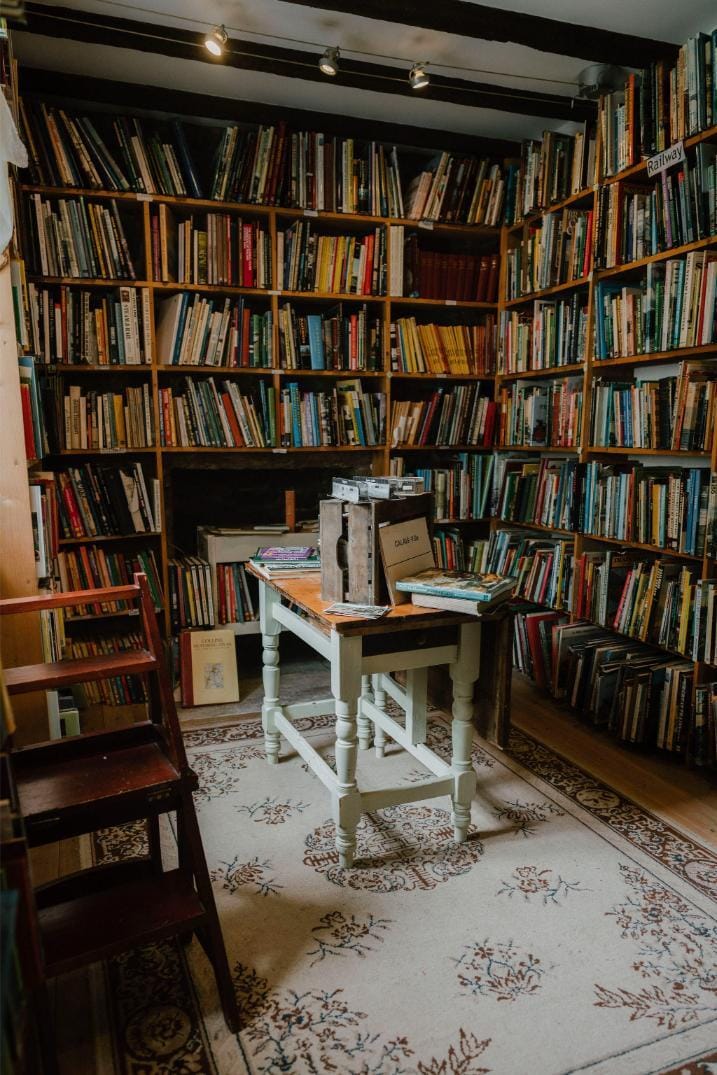 | 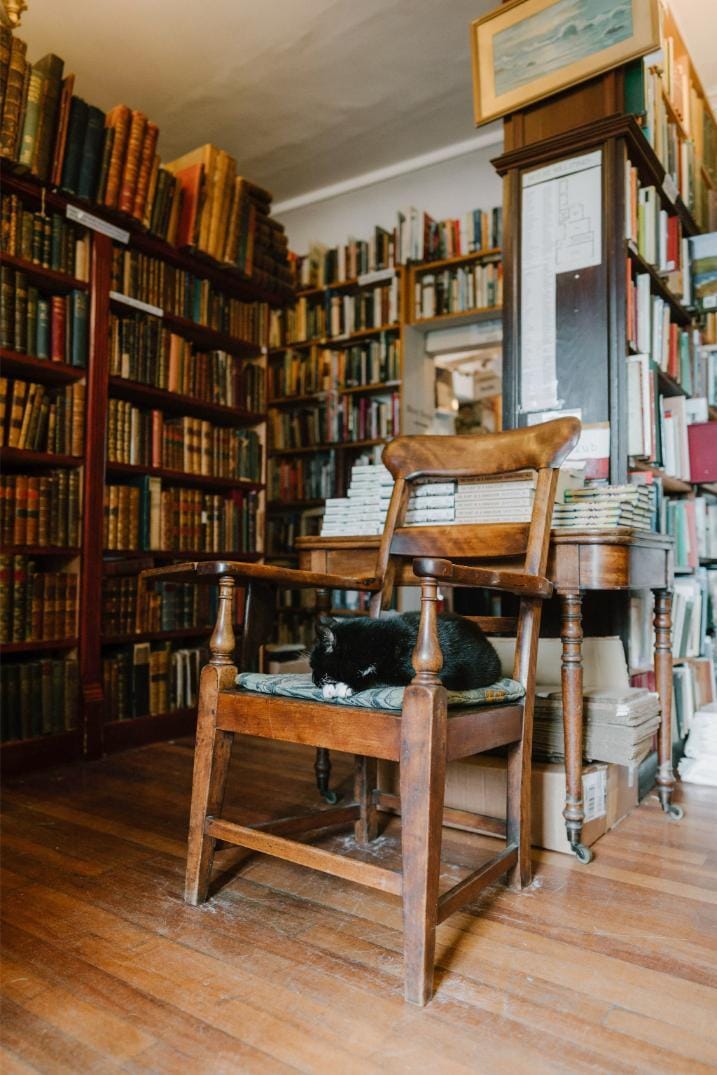 |
Continuing down North Main Street, you’ll come across an eclectic collection of shops before arriving at The Book Shop, which you’ll want to dedicate a good portion of time to, in order to peruse its shelves thoroughly. It’s a charming bookshop with such a large and varied collection of books that you’re bound to find something that peaks your interest. Next door to The Book Shop you’ll find the specialist children’s bookshop Foggie Toddle Books, renamed from Curly Tail Books, and the Book End Studio, as well as Number 11, which is home to the town’s book festival, selling a number of different books and gifts. Towards the bottom of town you’ll find The Open Book and Well Read Books of Wigtown - the latter being the town’s newest bookshop having been opened by Ruth Anderson in 2018.
You’ll find more bookshops by wandering up South Main Street, including Byre Books, which specialises in second hand books about folklore and mythology, Scottish books, play scripts and radio plays, as well as Archaeology and books of a more general interest. ReadingLasses is just a short way up the road, followed by the Old Bank Bookshop. Like the name suggests, this bookshop is based in an old bank, preserving the history of the town while selling a wide variety of second hand books.
It’s not just bookshops that book loving folk will find during a trip to Wigtown. The town also hosts the country’s first bookshop B&B, The Open Book, which is a fully blown literary experience for those who have always dreamed of running their own bookshop. Guests are granted full reign over the shop while lodging in the apartment above. They’re free to man the till, interact with customers and create their own displays, while also having the freedom to shut up shop when they fancy it and go out exploring the local area. It sounds like a flexible and fun, low risk way for book lovers to live their bookshop running dreams, without making the full commitment themselves. Be warned, The Open Book is often booked up many months in advance, so you’ll need to get in there early and may be in for a long wait.
While Wigtown is unique regarding its high concentration of independently owned bookshops, it’s also located in an area of significant literary importance. This makes it the perfect base for a literary trip to the Scottish Borders, beginning in Wigtown and extending up to Dumfries, which was occupied by a number of high profile Scottish writers. The author of Peter Pan, J. M. Barrie, spent much time playing in an elegant home to the east of the city named Moat Brae. A place where the young author would play imaginary games with his friends, its garden is said to have been the inspiration for Neverland while he was writing Peter Pan. After recently facing demolition, a fundraising drive allowed it to be saved and reopened as a National Centre for Children’s Literature and Storytelling. Still known as Moat Brae, the house is a magical place for children and adults alike, preserving the precious history of a world famous story.
The area also shares strong links with Robert Burns, the Scottish literary great who inspired Burns Night, which takes place on the 25th of January each year. The renowned novelist and poet who is famed for writing in the Scots language, once lived in Dumfries on the aptly named Burns Street. Burns was based here from 1788 - 1791, where he spent the twilight years of his career. The house itself remains a snapshot of life during the 18th century, and still contains a number of personal items that belonged to the late bard, including his writing desk and chair.
On the topic of Scotland’s literary greats, Abbotsford, the grand home of Sir Walter Scott can also be found further up the country in the Scottish Borders. This is where Scott resided from 1817 until 1825. The house itself is based on a 1,400-acre estate, and a large portion of it is open to the public. Visitors can view his writing desk, beautiful library and other items from his personal collection. One wing of the house even accepts overnight guests! The Hope Scott wing was once home to Scott’s granddaughter, Charlotte Hope Scott. The wing itself is still filled with the family’s original furniture, making for an amazing immersive experience. Charlotte inherited Abbotsford after her father’s death, commissioning the new wing for herself and her family in 1847. Tragically, Charlotte’s life was short and she passed away during childbirth in 1858.
Wigtown and its surrounding area is so much more than a humble collection of second hand bookshops. It’s truly a hub of literary activity, nestled in the heart of Scottish literary history, and watched over by some of Scotland’s greatest literary figures. It’s a truly special area of the country, one that’s sure to enchant visitors over and over again.
 |  |
This article featured in issue 06 of the Hidden Scotland Magazine. To read online click here
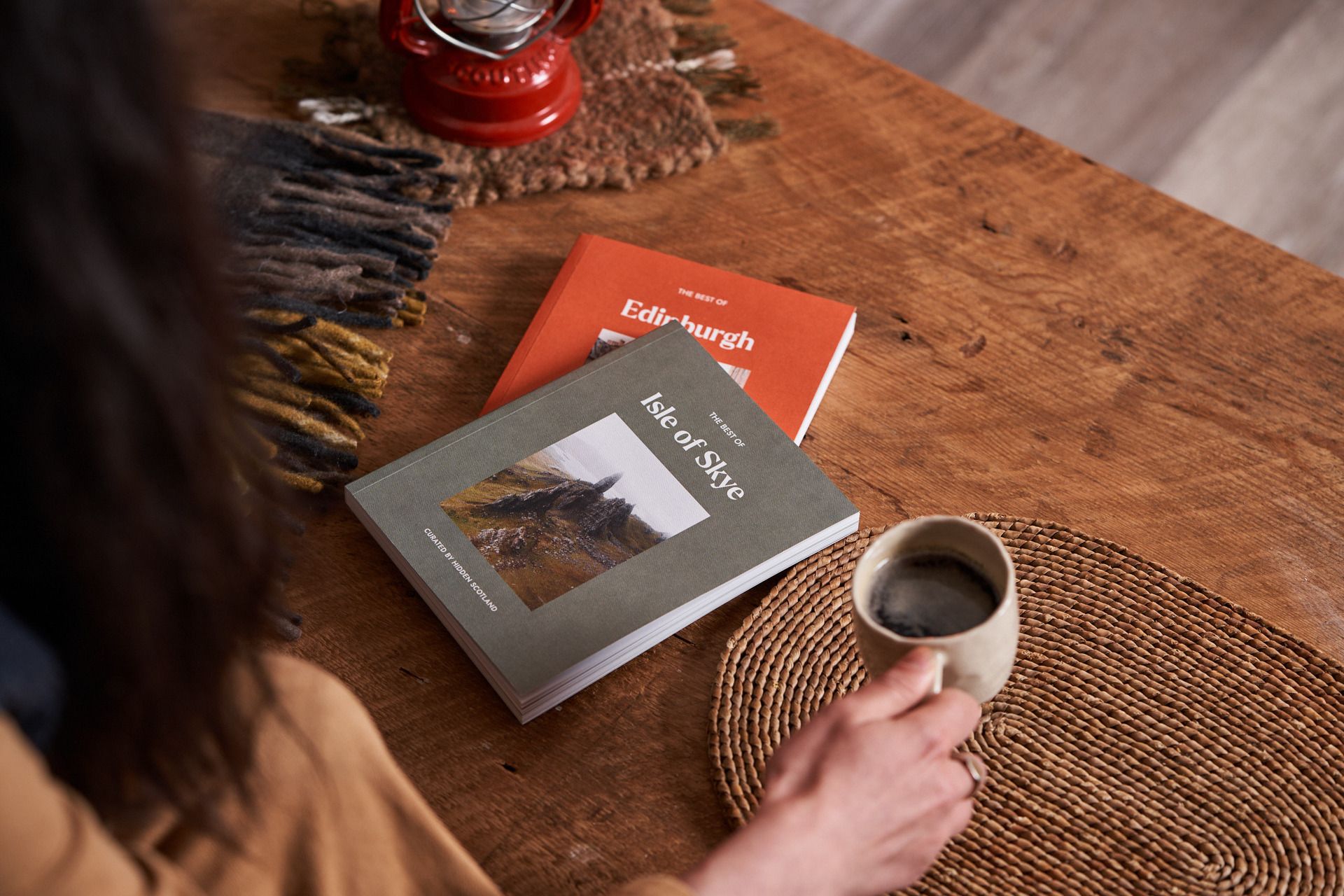
Planning a trip to Skye or Edinburgh next year?
Our Hidden Scotland guides are made for travellers who want more than a checklist. The Best of Skye explores wild landscapes, walks, food, and island life, while The Best of Edinburgh uncovers stories, local tips and city secrets beyond the castle walls. Both include pull-out maps, audio stories and insider insight to help you plan a trip that feels personal and well-paced.
Quiz Answers
Iron Girders
Seven
Arthur Conan Doyle
Did you like today's email?How can we improve? leave your feedback in the next step. |
If you would like to email us about any suggestions or feedback please email [email protected] with the subject feedback. Thanks!

